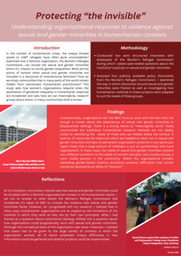Leadership in Action Weeks 1 and 2
Delhi is a city of 34 million people. Without a clear urban centre, it’s a disorientating place that seems to run according to its own unspoken rules. There’s a six lane high way that runs in between my airbnb and the office. Even the Delhi locals don’t quite seem to be able to figure out how to cross it. There’s a bridge - but you can’t get over the bridge without a metro ticket, and I don’t want to get the metro I just want to get to the other side of the road. That of course, leaves me with the rickshaw, those little exposed metal cabs. Every morning, I pay a rickshaw driver around 90p just for him to drive me into oncoming traffic and battle his way through to the other side of the road.
From one point of you - this choice of transportation makes perfect sense. In Delhi, this is the most rational way for me to get to work. From another angle, my novel forms of transport show how vast the gulf between different versions of our lives can become in a matter of days. A week since my arrival in India and the patterns of daily routine have been uprooted. It’s not easy to narrate an experience like this one while you’re still in it. Being so far away from home, in a culture so foreign, I feel a little as if I am outside my own life.
The organisation I’m working at is India’s Self Employed Women’s Association. It’s a difficult entity to describe, because, as my manager likes to remind me, SEWA isn’t an organisation it’s a movement. Founded in the 1970s by Indian lawyer Ela Bhatt, SEWA seeks to represent the millions of women (around 90% of the workforce) in India employed in the informal economy. Now a registered trade union, SEWA has 2.9 million women as its members involved in a huge variety of trades and professions. Understandably, there’s a rich sense of the organisation’s heritage in the office. Back in 1974, the SEWA co-operative bank was the world’s first micro-financing institution. Today, SEWA continues to innovate. In 2023, for example, they broke new ground by introducing an insurance program for women in rural areas facing adverse effects from climate change.
SEWA is an intimidatingly impressive set of organisations, co-operatives, and local groups that together make up a unified but loosely shaped association. Run from the grassroots, it is an organisation, that like the city of Delhi itself, lacks a clearly identifiable core. Power seems to flows outward rather than upward the organisational hierarchy. Founded with the ethos that the women of India ‘are so poor but so many’, the movement seeks to channel the collective agency of those who have typically been socially and economically marginalised. In an era in which development organisations are constantly called on to do more while simultaneously having less resources, SEWA is a model of effective and innovative locally based policy making.
While these are undoubtedly where the association’s strengths lie, these features also make it a strange place to be an intern from abroad. My responsibility is to carry out research and design policy for women agricultural labourers in a new region of North India that SEWA is expanding into. The day to day of taking notes on think-tank reports and filling in funding proposals is not too far removed from the academic expectations of university. Writing, analysing, and synthesising new ideas, is in many ways, a familiar source of comfort an otherwise unpredictably new set of circumstances.
I guess the difference between this and any other research project I’ve ever done is that I can see the significance of the questions I’m answering with my own two eyes. On my second day in Delhi, SEWA staff took us to one of Delhi’s women’s markets. Along the side of a big road, women sell second hand clothes, materials, and household items. SEWA successfully advocated for this to become a women’s space because of the prevalence of harassment and lack of safety that women face in most settings. Speaking to the vendors, I see real life evidence of the fact that membership of a women’s organisation has enabled collaboration, co-operation, and connection among informally employed women. Obviously it’s inspiring to have the opportunity to participate in such purpose-driven work, yet at the same time I can’t help but feel that I’m very far from ‘leading’ anyone. If there’s anything that my first two weeks in Delhi have taught me, it’s that among so many, I am only one.


Please sign in
If you are a registered user on Laidlaw Scholars Network, please sign in